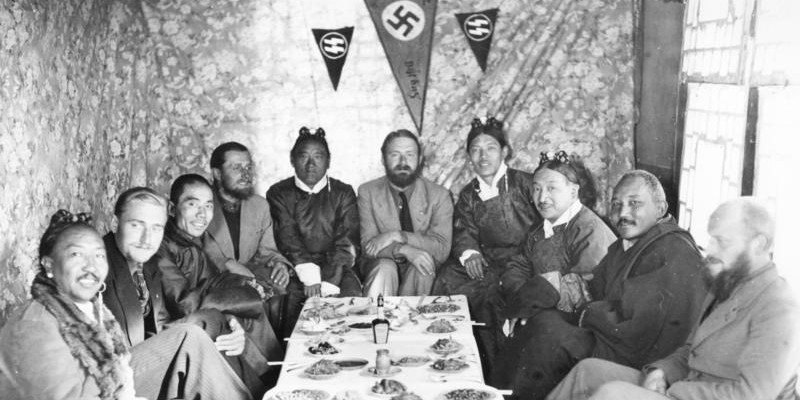Nazi’s Tibet expedition in the era of 1930s-40s to find the Aryan race origin is reported to have turned into a drunken hunting. Exotic East has always been a center of attraction among westerners. The names Shangrila and Shambala still ignite same passions as they did years before when the interest in oriental studies was at its prime. Tibet has also enjoyed a plethora of interest among Europeans particularly the Germans.
There is a particular theory in Aryan studies that propounds that Germans have originated from a ‘Northern’ race which might be residing in present day Tibet. This particular study is called “Die nordische Rasse bei den Indogermanen Asiens (The Northern Race among the Indo-Germans of Asia)”.
With hopes to find the home of mythical Aryan race German explorers, researchers went to Tibet frequently between 1926 and 1940.
The most notable expedition took place in 1938-39 when a team of German/Nazi scientists including zoologists and anthropologists explored Tibet between May 1938 and August 1939. This expedition took place with consent of Tibetan government of that time. The Tibetan Government welcomed the German expedition at the 1939 New Year (Losar) celebration in Lhasa.
This was not the first expedition. Ernst Schafer, a German hunter and biologist, participated in two expeditions to Tibet, in 1931–1932 and 1934–1936, for sport and zoological research. Later he was sponsored by the Nazis to lead a third expedition (1938–1939).
The Germans were highly interested in establishing friendly relations with Tibet pretty much like their Japanese friends. But they were more interested in finding roots of mythical Aryans in Tibet.
The German scientists measured the skulls of three hundred Tibetans and concluded that the Tibetans occupied an intermediary position between the Mongol and European races, with the European racial element showing itself most pronouncedly among the aristocracy.
However, a book published in Germany sheds a new light on this expedition and shows that how this expedition turned into a drunken hunting exercise. As a proof, more than 3,500 mummified birds, 2,000 eggs, 400 skulls and pelts of mammals, reptiles, amphibians, several thousand butterflies, grasshoppers, 2,000 ethnological objects, minerals, maps and 40,000 black-and-white photographs reside in German museums and research institutes.
The Nazis killed the animals and birds much to the displeasure of the locals but it continued unabated as Tibetan elite of the time had positive views of the guests. The British in the neighboring India called it ‘drunken hunting’ disguised as research.
Many years later the memories of Nazi interest in Tibet have become alive again. Tibet continues to be the exotic and largely inaccessible land but today it is more because of Chinese oppression.

